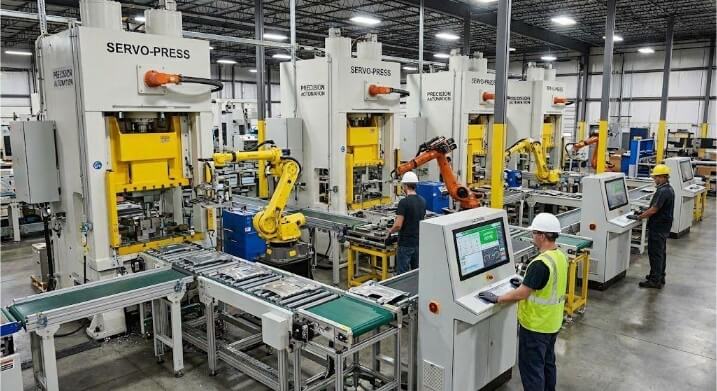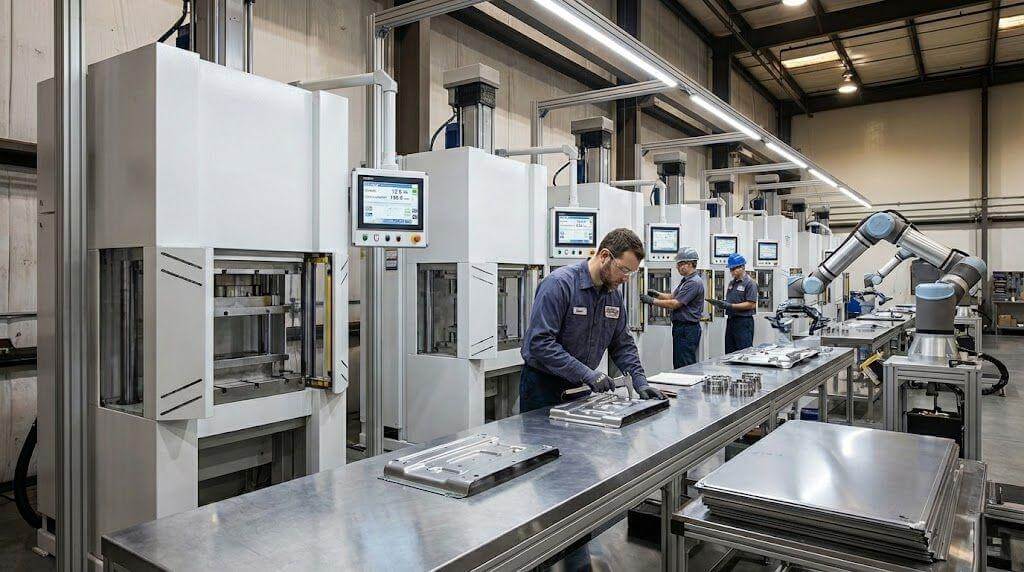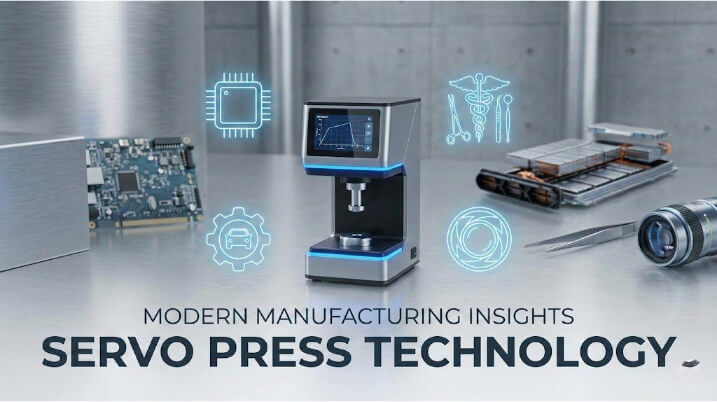Titanium looks excellent, but polishing it can be a real challenge. You may encounter issues such as streaks, scratches, or a dull surface. Many people want that bright, mirror finish, but they don’t know the proper steps or tools to use. This guide will show you how to polish titanium easily and safely, even if you are new to the process.
To polish titanium and achieve a mirror finish, you need to clean the metal, remove scratches, and use the right polishing compounds. Start with rough sandpaper, then switch to finer grits. Finish with a good metal polish and a soft cloth. Take your time at each step. The proper technique helps you get a smooth, shiny surface.
If you want your titanium to resemble chrome, you need to use the right tools and techniques. Let’s break the process down together.
What is Titanium Polishing?
Titanium polishing is the process of smoothing and shining the surface of titanium parts. It removes tool marks, oxidation, and scratches from machining and forming processes. The goal is to create a clean surface that reflects light clearly, like a mirror.
This process uses sanding, buffing, and polishing compounds. You start with rough grit to level the surface. Then you use finer grits to remove marks left behind. Finally, you buff the part to a high shine using polishing paste or rouge.
How to Polish Titanium: Step-by-Step
Polishing titanium isn’t just about using force. It needs careful steps to get the best finish. Each stage builds on the last to create a smooth and even surface. Below is a step-by-step guide to achieve a soft, mirror-like finish.
Materials Needed
- Safety gear (gloves, goggles, dust mask)
- Sandpaper (various grits: 120, 220, 400, 600, 800, 1000, 1500, 2000)
- Polishing compounds (rouge, diamond, or aluminum oxide)
- Polishing wheel or Dremel tool (with buffing pads)
- Microfiber cloth
- Metal polish (optional, for final touch)
- Cleaning solvent (isopropyl alcohol or acetone)
Step 1: Cleaning the Surface
Before doing any sanding, clean the titanium to remove dirt, oil, and fingerprints. Titanium forms a thin oxide layer quickly, which can affect the polishing results.
Use acetone or 99% isopropyl alcohol (IPA). These dry fast and leave no film. Wipe the surface with a clean, lint-free cloth. After cleaning, don’t touch it with your bare hands—skin oil can cause problems later.
Step 2: First Round of Sanding (Coarse Grit)
Titanium is more rigid than aluminum or mild steel. Its surface hardness is usually between 200 and 400 HV. Start sanding with 120- or 220-grit aluminum oxide sandpaper.
Use a sanding block to keep flat surfaces even. For curved parts, a soft sponge-backed sanding pad may work better. Sand in straight lines, not circles.
Always go in one direction. This makes it easier to track your progress and spot any leftover scratches. Once the deep scratches and marks are gone, wipe the surface again with IPA to remove sanding dust.
Step 3: Finer Sanding (Medium to Fine Grit)
Now it’s time to smooth the surface. Move through finer grits step by step: 400, 600, 800, 1000, 1500, and 2000. Each grit removes the scratches left by the one before.
From 600 grit onward, use wet sanding. You can use distilled water or a light lubricant, such as WD-40. This helps cool the part, reduces clogging, and gives you better control.
Change the sanding direction with each new grit. That helps show if the last set of scratches is gone. Take your time—don’t rush or skip grits. Skipping can lead to visible scratches later.
Step 4: Polishing with Compound
At this stage, the part should look dull but feel smooth. Now comes the shine.
Use a soft cotton or flannel buffing wheel. A bench grinder or handheld tool works well. Keep the speed between 1,800 and 3,500 RPM. Avoid going too fast. Titanium doesn’t move heat well (17 W/m·K), so it can overheat quickly.
Choose a good polishing compound. Here are some options:
- White Rouge – for light polishing and a shiny finish
- Blue Rouge – for hard metals like titanium
- Titanium-specific pastes – for best results on reactive metals
Apply the compound directly to the spinning wheel. Then gently press the part against the wheel. Keep it moving. If you hold it in one place, it will heat up.
Work in small sections. Reapply the compound every few minutes. After one full round, wipe off the surface and check it under bright light. Repeat this step two or three times for the best shine.
Step 5: Final Cleaning and Protection
After polishing, clean the surface with a microfiber cloth. Use IPA or a gentle metal cleaner to remove leftover compound.
For added protection and shine, use a non-abrasive jeweler’s polish or a nano ceramic coating. These help keep the surface clean and reduce the chance of re-oxidation.
Examine the surface from various angles and under different lighting conditions. A mirror-like finish should reflect shapes clearly, without fog or distortion. A good mirror polish usually has a surface roughness of less than 0.05 μm Ra.
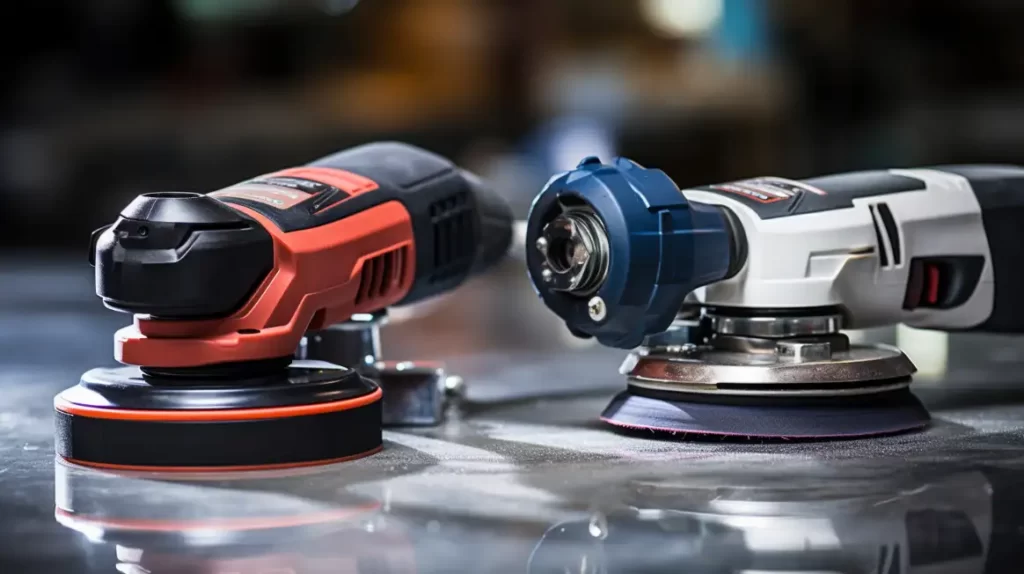
Different Grades of Titanium Surface Polishing
Titanium can be polished to different levels depending on how the part will be used. Some parts only need basic smoothing. Others require a bright, mirror-like finish. Each level of polish has its purpose and appearance.
Rough Polishing
Rough polishing is the first step for parts with heavy wear or surface damage. It removes deep scratches, weld marks, and signs of oxidation. This level uses coarse sandpaper, usually 120 or 220 grit. The finish looks dull, but the surface becomes flat and even. It’s often used as a base before going to finer steps or before applying a coating.
Medium Polishing
Medium polishing enhances the appearance and texture of the metal. It smooths out lines left from rough sanding. This step uses sandpaper with grits ranging from 400 to 800. The result is a satin or brushed finish. It doesn’t reflect light clearly, but it looks clean and uniform. This level works well for parts that are visible but don’t need a glossy look.
Fine Polishing
Fine polishing brings out more shine. It uses finer grits, typically ranging from 1000 to 1500. This step removes most haze, leaving a semi-gloss finish. You can start to see reflections, though they may be a little soft. This polish is often used on parts that are meant to be visible but not heavily handled, such as trim pieces or decorative covers.
Mirror Polishing
Mirror polishing gives the highest level of shine. It uses excellent abrasives, polishing pastes, and soft buffing pads. The surface becomes smooth enough to reflect light clearly, almost like a mirror. There are no visible scratches or texture. This finish is used for jewelry, showpieces, or high-end designs where appearance truly matters.
Pro Tips for a Flawless Titanium Polish
Getting a clean, mirror-like finish on titanium takes more than just the right tools. Good habits and small details can make a big difference. Here are a few tips to help you get better results.
Avoid Overheating
Titanium heats up quickly when you sand or polish it. If it gets too hot, the surface can warp or change color. To avoid this, use light pressure and take short breaks between passes. If you’re using power tools, keep the tool moving. Never let it stay in one spot for too long.
Use Consistent Pressure
Always apply even pressure while sanding or polishing. Pushing harder in some areas can cause uneven spots or leave dull patches. Let the tool or sandpaper do the work. This keeps the finish smooth and flat without adding extra scratches.
Work Step by Step
Don’t skip grit levels. Move from coarse to fine sandpaper in order. Each grit removes the scratches from the one before it. If you jump ahead too soon, deep lines may stay behind and ruin the final polish. Take your time and follow the whole process.
Protect the Finish
After polishing, clean the surface with isopropyl alcohol or a soft cloth. Store the part in a clean, dry place. To protect the shine, you can apply a thin coat of wax or a surface sealant. This keeps the titanium looking bright and helps prevent spots or tarnish over time.
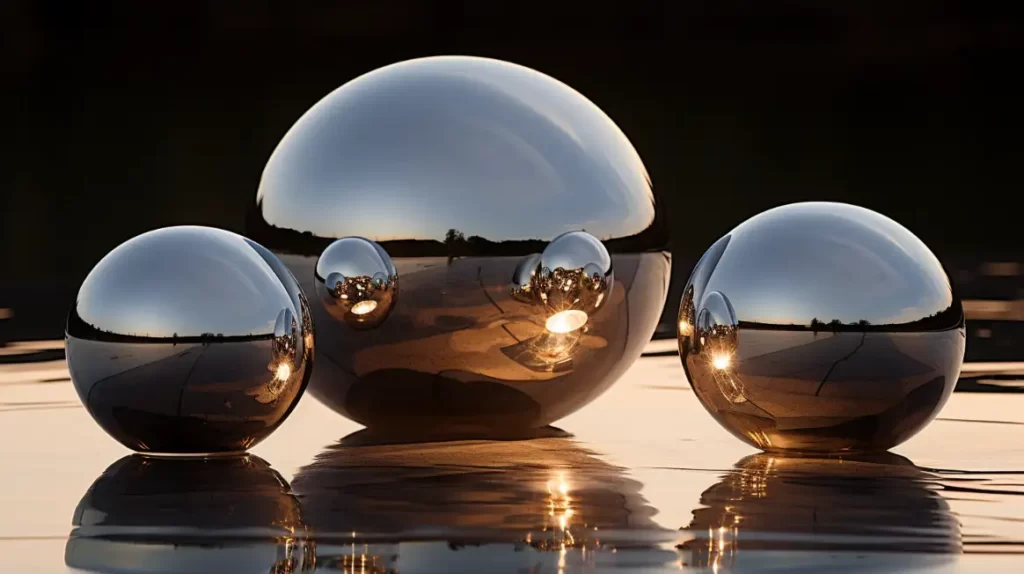
Benefits of Polishing Titanium
Polishing titanium isn’t just about making it shiny; it’s also about enhancing its properties and improving its performance. A smooth finish can help the part perform better, last longer, and stay cleaner. Here’s what a proper polish can do for you.
Better Appearance
Polished titanium looks clean and high-end. A mirror finish reflects light, adding a modern, sharp look. This is ideal for visible parts or products where design and appearance are crucial.
Higher Corrosion Resistance
A smooth surface has fewer small pits or grooves. That makes it harder for water, dirt, or chemicals to settle in. Polished titanium is less likely to corrode over time, especially in harsh environments.
Easier to Clean
Smooth surfaces pick up less dust, grime, or stains. Polished titanium is easier to clean and maintain. That’s a significant advantage in industries such as medical, food processing, or electronics, where cleanliness is crucial.
More Wear-Resistant
Polishing lowers surface friction. This means the part is less likely to get scratched or worn from movement. It’s a good choice for items like hinges, sliding parts, or tools that get used often.
Better for Surface Treatments
A polished surface helps other finishes stick better. If you plan to anodize, paint, or coat the titanium, polishing first will give you smoother and more even results. It’s a vital prep step for many final treatments.
Applications of Polished Titanium
Polished titanium is utilized in various industries due to its strength, sleek appearance, and resistance to damage. Here are some familiar places where it plays a key role.
Aerospace
In aircraft and spacecraft, polished titanium is used for parts that require both strength and lightness. A smooth surface also helps reduce drag and improves resistance to fatigue and wear.
Marine Engineering
Titanium resists saltwater corrosion better than most metals. Polished parts last longer in boats, underwater tools, and offshore equipment. The smooth finish also reduces buildup from algae or minerals.
Automotive
High-end car parts, such as exhaust tips, trim, or engine covers, often utilize polished titanium. It provides a sleek look while withstanding heat and vibration. It’s also lighter than steel, which helps performance.
Medical
Surgical tools, implants, and equipment frames are made from polished titanium. The finish makes them easy to sterilize and reduces the likelihood of bacterial growth. It’s safe for the body and holds up well under repeated cleaning.
Consumer
Titanium watches, eyeglass frames, phone cases, and even jewelry often feature a polished finish. The clean shine adds value and helps protect against daily wear. It’s light, durable, and skin-friendly.
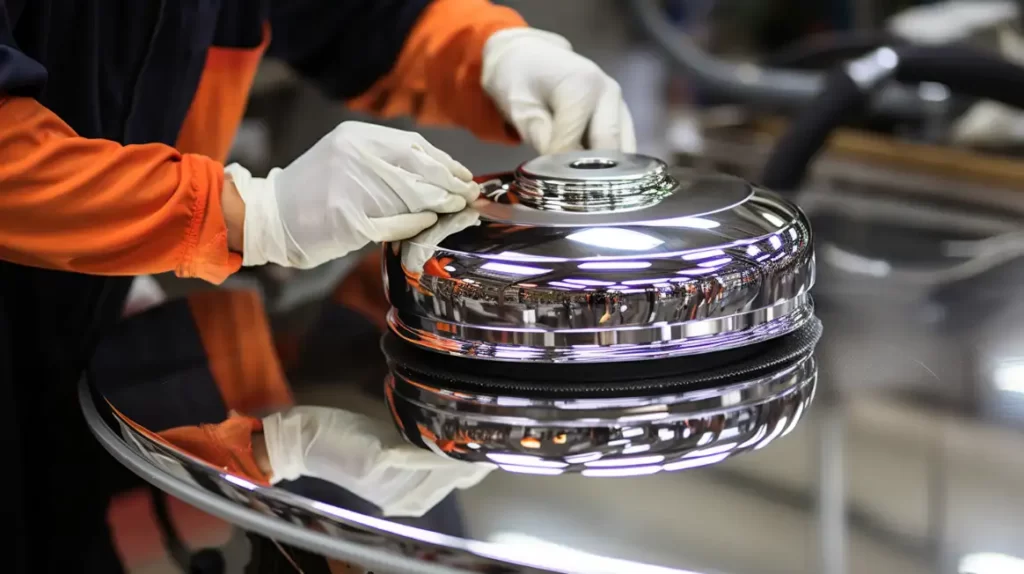
Conclusion
Polishing titanium takes a few straightforward steps—cleaning, sanding, and finishing with the right compounds. Each stage builds toward a smooth, mirror-like finish. With the right tools, steady pressure, and a bit of patience, you can achieve professional results.
Need help with titanium parts or custom metal finishing? Contact us today to get a fast quote and expert support on your next project.
Hey, I'm Kevin Lee

For the past 10 years, I’ve been immersed in various forms of sheet metal fabrication, sharing cool insights here from my experiences across diverse workshops.
Get in touch

Kevin Lee
I have over ten years of professional experience in sheet metal fabrication, specializing in laser cutting, bending, welding, and surface treatment techniques. As the Technical Director at Shengen, I am committed to solving complex manufacturing challenges and driving innovation and quality in each project.

